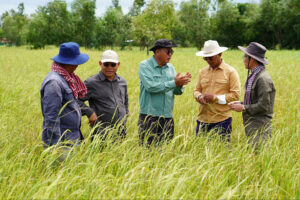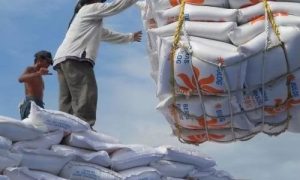Japan bets on heat-resistant rice as hot summers hurt harvest

Japan is battling a severe rice shortage due to extreme weather last year, causing low reserves and high prices. The Saitama Agricultural Technology Research Centre is developing heat-resistant rice varieties like “emihokoro” to address future supply issues. With projected rice yield declines of 20% by 2100, these advancements are crucial for adapting to climate change.
After extreme weather ravaged Japan’s rice harvest last year, the country is grappling with a stark shortage of a food that many see as a crucial staple there.
Supermarkets across the country have struggled to keep rice on the shelves in recent months and some have even imposed quotas on how much customers can buy.
With reserves of the grain at their lowest in a quarter century, and temperatures still on the rise, Japan is turning to science to prevent future supply shocks– and is on a mission to develop more heat-resistant strains of rice.
Saitama prefecture, north of Tokyo, is one of the hottest regions in the country.
The local government here is pushing ahead with one of several nationwide projects to develop more resilient rice.
Saitama’s Agricultural Technology Research Centre is experimenting with a heat-resistant variety called emihokoro, which translates to ‘beaming smile’.
Researchers here cultivate and cross-pollinate seeds from across Japan to create hardier varieties like emihokoro, which has been planted in dozens of fields as part of a trial.
Naoto Ooka oversees the operation.
“As there hasn’t been anything resistant to heat before now, we cultivated this with the aim of having high temperature resistance and being a little slower (growing) than the previous crop.”
High heat disrupts the accumulation of starch inside rice grains, causing them to appear more opaque, mottled with white flecks, and less desirable for humans to eat.
Ooka hopes to eventually breed resilient varieties together to reach new heights of heat-resistance.
“As our understanding continues to progress I think an important future task for us will be to make further improvements on the current level by combining varieties with high heat tolerances.”
The world’s fourth-largest economy imports more than 60% of its food resources, but rice is also one of the few things the nation has historically been able to produce self-sustainably.
Last year’s poor yields have contributed to dwindling stocks and soaring prices this summer.
And an agriculture ministry report released in July gave more cause for concern, projecting rice paddy yields in Japan to decline about 20% by 2100 compared to the previous century.
The ministry said shifting to high temperature-tolerant rice varieties like emihokoro was Japan’s most important measure to address the impact of climate change on crops and possible future shortages.
Yoshitaka Funakawa is a 73-year-old farmer who is participating in the Saitama trial run.
Like the government officials in Tokyo, he is also betting on science.
“It’s going to keep getting hotter, which makes me feel that without varieties that resist high temperatures, this is going to become a very tough job.”
To read more about the news about the Rice News continue reading Agriinsite.com
Source Link : https://www.yahoo.com/news/japan-bets-heat-resistant-rice-093227059.html














